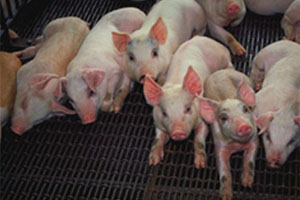African Swine Fever and the ASFORCE project

African Swine Fever (ASF) is a complex and devastating disease of domestic pigs caused by a complex virus, the only member of the Asfarviridae family that is maintained in nature under different and complex epidemiological scenarios, involving domestic and wild swine and soft ticks, genus Ornithodoros.
The causative agent (African swine fever virus – ASFV), infects domestic pigs of all ages, without sex predilection, and causes a wide range of clinical signs, in particular those typical of a haemorrhagic fever with multiple organ involvement and mortality rates of up to 100%. Humans are not susceptible to ASFV infection.
The disease was first described in Africa (Kenya) by R. E. Montgomery in 1921. In Europe, ASF was introduced in Portugal in 1957; after eradication of this outbreak it reappeared in the country in 1960 and disseminated from the 60’s to the 80´s to Spain, France, Italy, Malta, the Caribbean Islands (Cuba, Dominican Republic, and Haiti), Brazil, Belgium and The Netherlands. Up to date, ASF is enzootic in the great majority of Sub-Saharan countries and apart from Sardinia (Italy), EU countries are disease-fee upon eradication from Portugal and Spain in early 90´s.
Out of Africa, the ASF silence was broken in 2007 when the disease was declared in Armenia, Georgia, Azerbaijan and spread to the Russian Federation. Up to now the disease remains and spreads in this part of Eastern Europe, and outbreaks were identified in Ukraine in 2012 and lately in Belarus (June 2013).
At present no treatment or vaccine are available and prevention, control and eradication of the disease are mainly based on the implementation of strict and complex sanitary measures. The occurrence of ASF causes significant socio-economic impact in affected countries. The disease has a major negative effect on national, regional and international trade and it seriously affects livelihoods of pig farmers.
The ASFORCE project, aims at contributing to identify and solve main relevant issues regarding the prevention of ASF entry in the EU, mainly focusing on the threat posed by the occurrence and spread of the disease in Eastern Europe.











